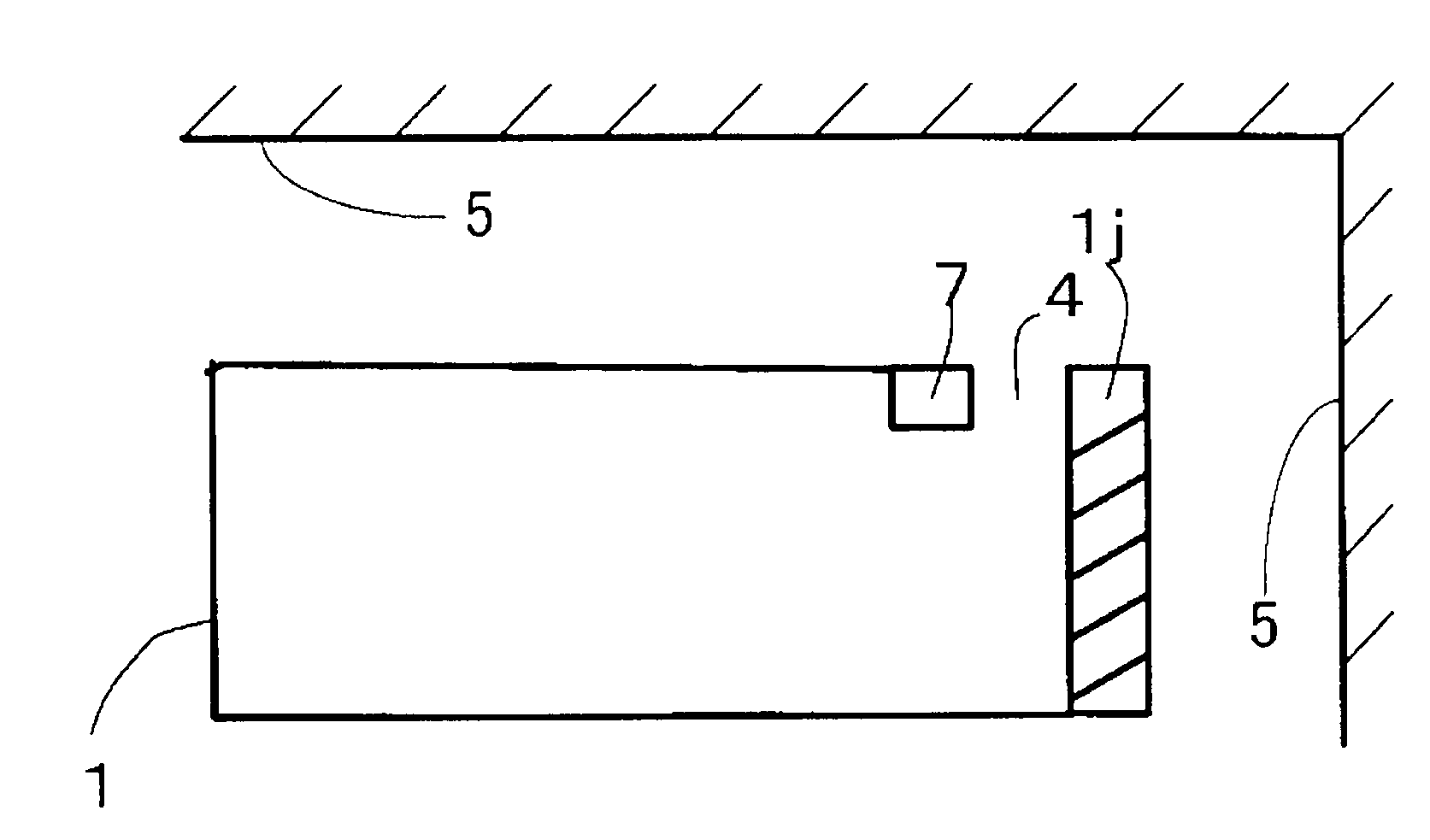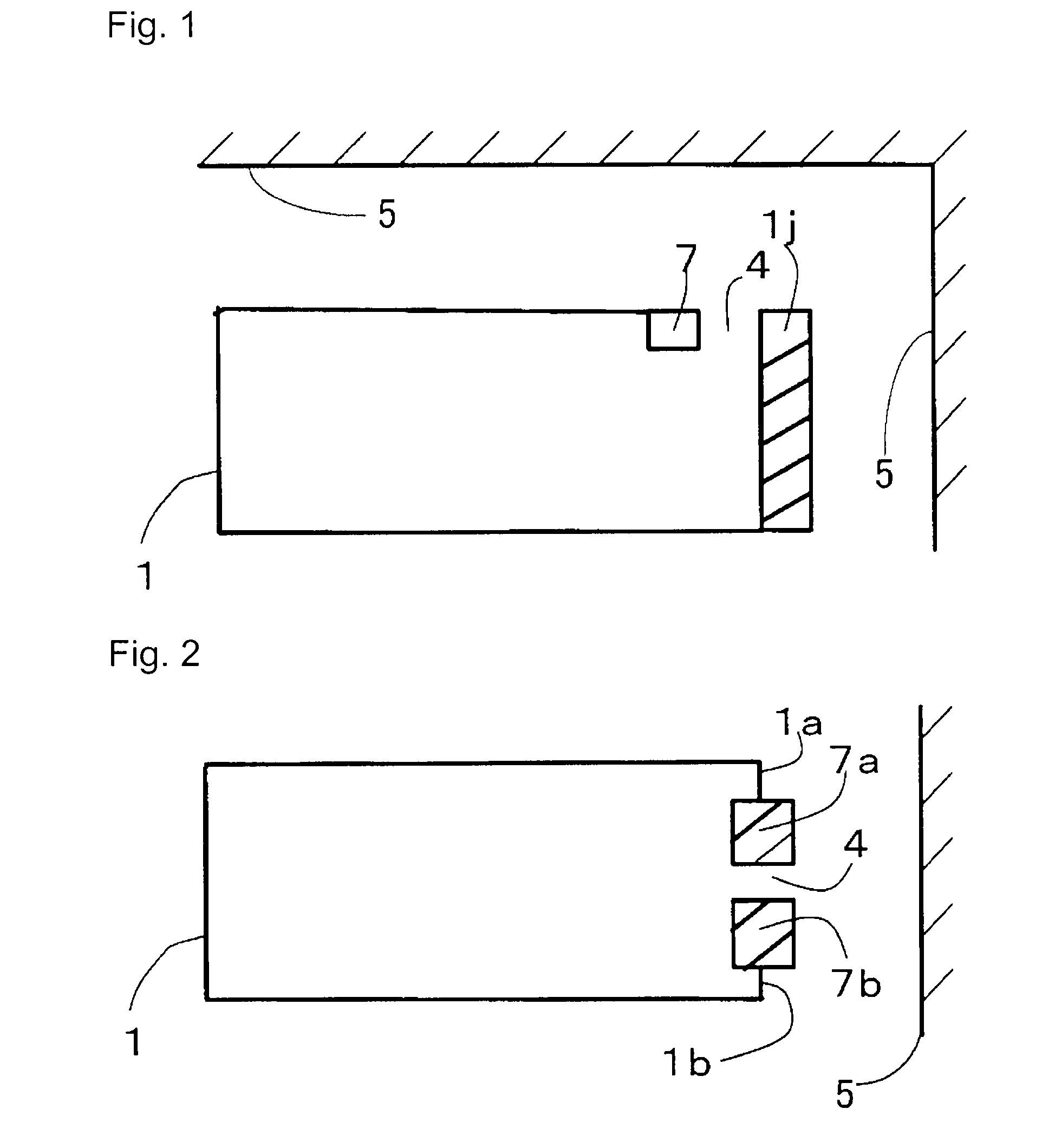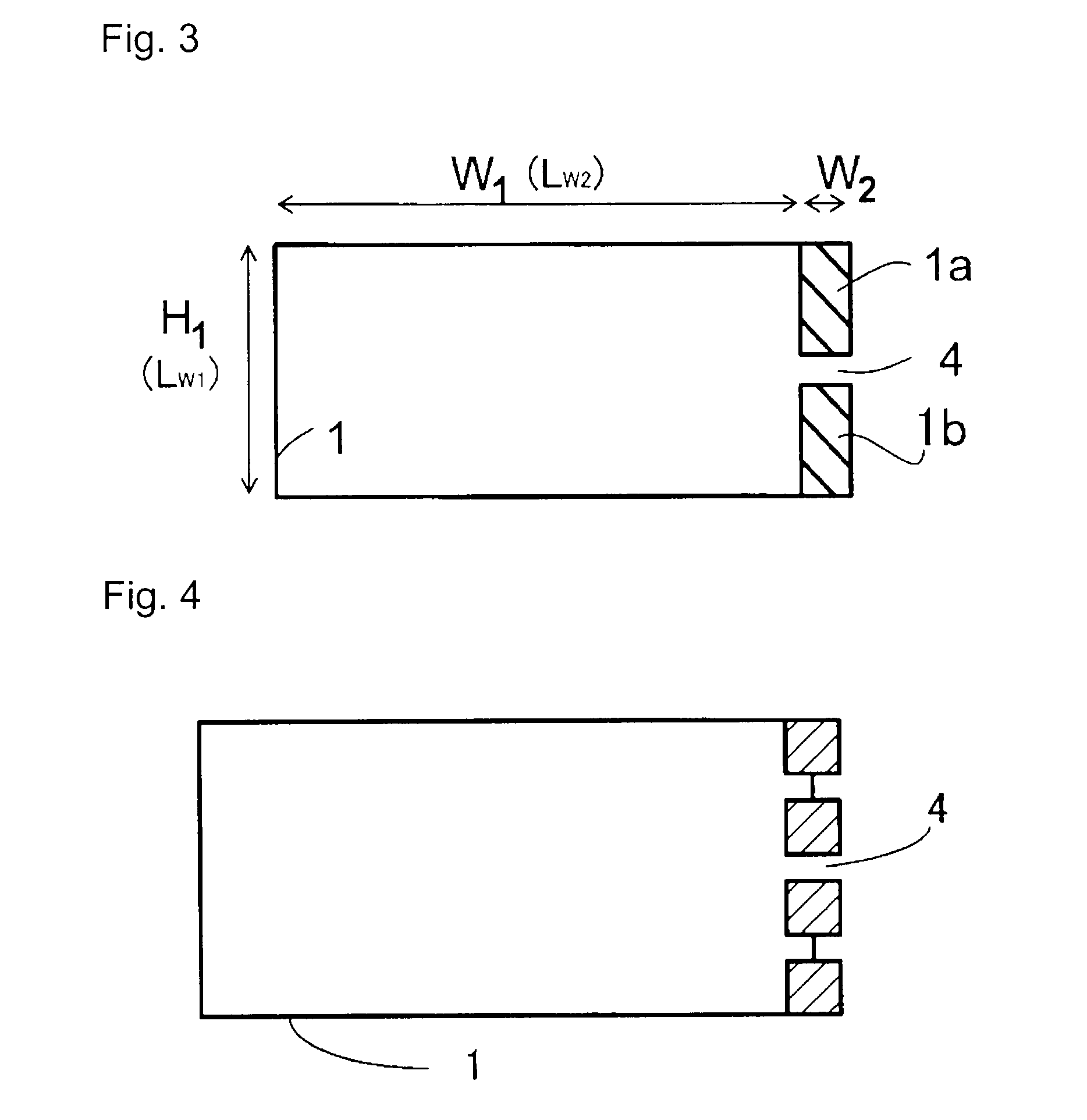High frequency wave glass antenna for an automobile and window glass sheet for an automobile with the same
- Summary
- Abstract
- Description
- Claims
- Application Information
AI Technical Summary
Benefits of technology
Problems solved by technology
Method used
Image
Examples
example 1
[0076]It is assumed that a square glass substrate forms a rear window glass sheet. The high frequency wave glass antenna for an automobile is formed by disposing the antenna conductor 1 shown in FIG. 3 at a central portion of the glass substrate on one of the opposed surfaces of the glass substrate, which is supposed to be positioned on the car-interior-side. It is assumed that no other conductor than the antenna conductor 1 is disposed on the glass substrate.
[0077]In accordance with the FDTD method (Finite Difference Time Domain method), the return loss was calculated with the conductor width W2 being changed in a range from 0.8 to 40 mm. The calculation on the return loss was made at every 1 MHz in a frequency band of 470 to 770 MHz. The calculated values of the respective portions are listed below. FIG. 13 shows a characteristic graph which represents the minimum values of the return loss by the vertical axis and the conductor width W2 by the horizontal axis, based on the calcula...
example 2
[0078]The return loss was calculated with (LW2 / LW1) being changed (in other words, with (W1 / H1) being changed) under the same conditions as those in Example 1 except for the conditions listed below. The calculation method was the same as that in Example 1. (LW2 / LW1) was calculated at twelve points of 0.01, 0.05, 0.11, 0.25, 0.33, 0.50, 0.80, 1.00, 3.00, 5.00, 9.00 and 11.00. FIG. 14 shows a characteristic graph which represents the minimum values of the return loss by the vertical axis and (LW2 / LW1) by the horizontal axis.
[0079]FIGS. 15 to 17, based on which FIG. 14 is prepared, show return loss-frequency characteristics for respective values of (LW2 / LW1). FIG. 15 shows 0.01, 0.05, 0.11 and 0.25 as the values of (LW2 / LW1). FIG. 16 shows 0.33, 0.50, 0.80 and 1.00 as the values of (LW2 / LW1). FIG. 17 shows 3.00, 5.00, 9.00 and 11.00 as the values of (LW2 / LW1).
W220 mmGap of discontinuity 4 5 mm
example 3
[0080]The return loss was calculated at two points of 3.00 is and 11.00 for (LW2 / LW1) under the same conditions as those in Example 2 except that the discontinuity 4 has a gap of 1 mm.
[0081]When (LW2 / LW1) was 3.00, the return low had a minimum value of −7.75 dB in both of Example 2 and Example 3. When (LW2 / LW1) was 11.00, the return loss had a minimum value of −1.07 dB in both of Example 2 and Example 3. This reveals that there is no change in the value of the return loss in both of a case where the discontinuity 4 has a gap of 1 mm and a case where the discontinuity 4 has a gap of 5 mm.
PUM
 Login to View More
Login to View More Abstract
Description
Claims
Application Information
 Login to View More
Login to View More - R&D
- Intellectual Property
- Life Sciences
- Materials
- Tech Scout
- Unparalleled Data Quality
- Higher Quality Content
- 60% Fewer Hallucinations
Browse by: Latest US Patents, China's latest patents, Technical Efficacy Thesaurus, Application Domain, Technology Topic, Popular Technical Reports.
© 2025 PatSnap. All rights reserved.Legal|Privacy policy|Modern Slavery Act Transparency Statement|Sitemap|About US| Contact US: help@patsnap.com



